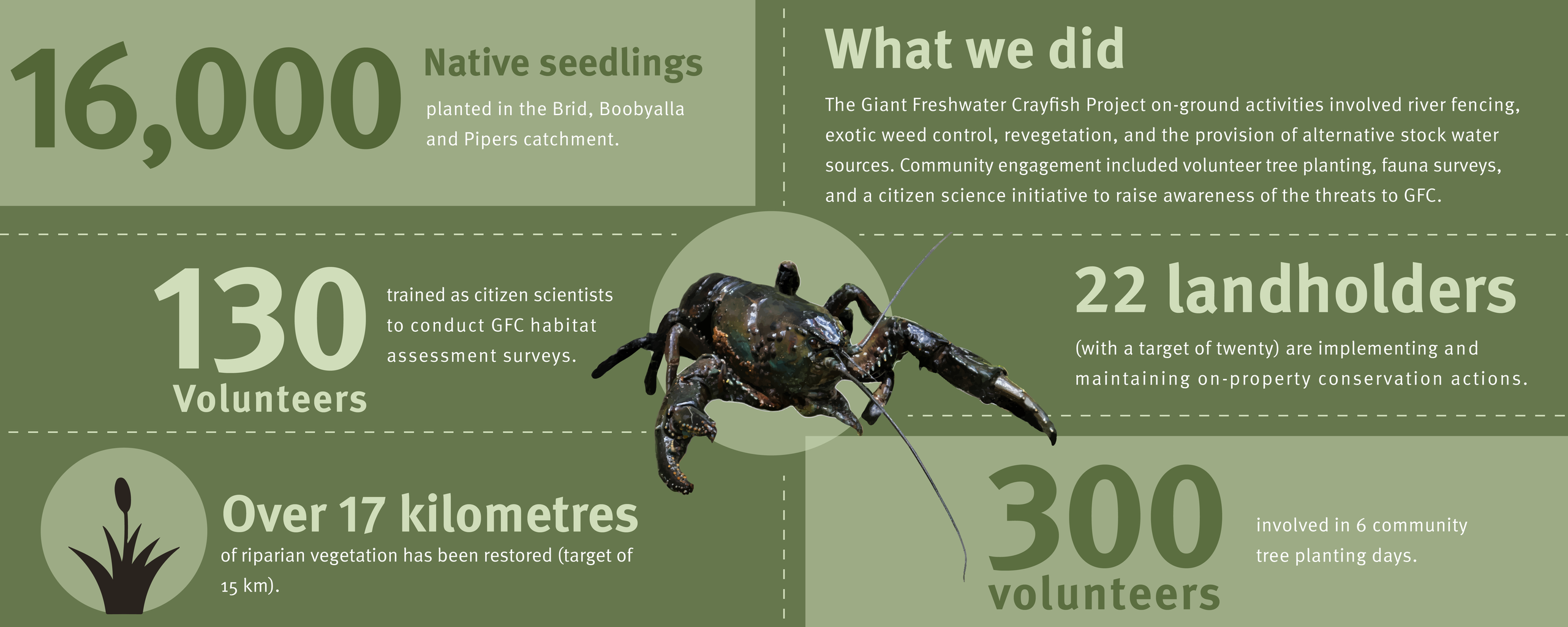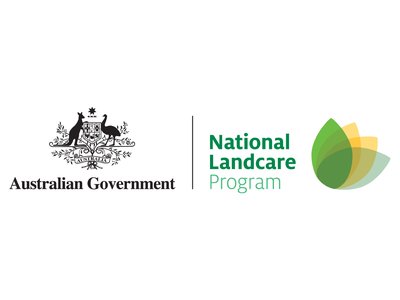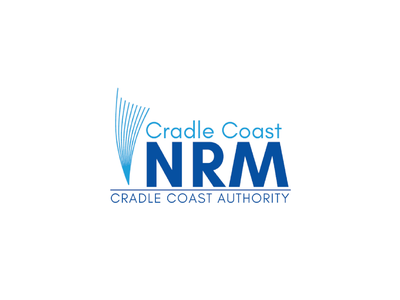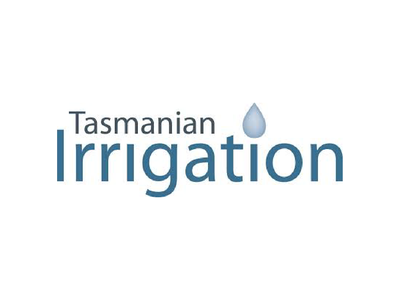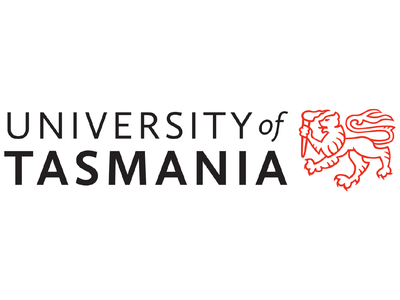Giant Freshwater Crayfish Project
The Giant Freshwater Crayfish Project aimed to expand and recover existing populations of giant freshwater crayfish (Astacopsis gouldi) in north-east Tasmania by improving water quality and native streamside habitat connectivity within priority stream reaches of the Pipers, Brid and Boobyalla catchments.
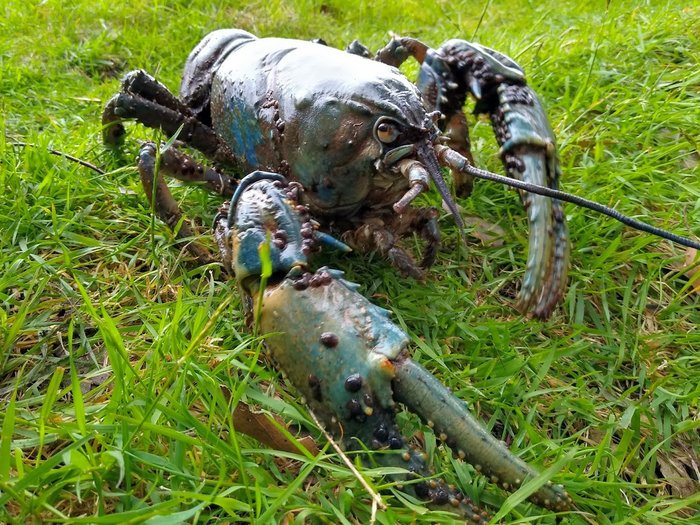
Adult giant freshwater crayfish (Astacopsis gouldi) can grow to weigh 6 kg and over 80 cm in length, however, there are currently very few individuals of this size in the wild. Image: Lauren Bird.
Background
Background
The Tasmanian giant freshwater crayfish is the largest freshwater invertebrate in the world, capable of growing to over 80 centimetres in length and weighing up to 6 kg. Endemic to northern Tasmania, it is only found in rivers that flow into Bass Strait and the Arthur catchment (except for the Tamar catchment) and is culturally significant to the Tasmanian Aboriginal community. Once a common sight in northern Tasmania, the species is now listed as vulnerable under both the Threatened Species Protection Act 1995 and the Environment Protection and Biodiversity Conservation Act 1999, and as endangered under the International Union for Conservation of Nature’s Red List of Threatened Species.
The Giant Freshwater Crayfish Project engaged landholders located within priority stream reaches of the Pipers, Brid and Boobyalla catchments to co-invest in on-ground habitat restoration works. These works included livestock exclusion fencing, controlling riverbank weeds, native riverbank revegetation and providing alternative water sources for livestock. The project also engaged the community in habitat planting days and a citizen science program to increase awareness of the species and its threats. Trained citizen scientists were equipped to collect data on potential crayfish habitats, which helped to improve knowledge about species distribution and where to focus habitat restoration investment. NRM North is now working on a new project: 'Giant freshwater crayfish: enhancing habitat conservation.' in additional catchments to expand the distribution of existing populations of the giant freshwater crayfish (GFC), Astacopsis gouldi.
“We work hard to respect and care for the land, for generations to come.”
“We work hard to respect and care for the land, for generations to come.”
Liz Mahnken, Summerlea Farm
Liz Mahnken, Summerlea Farm

Excluding livestock from rivers and establishing dense native plantings reduces threats to giant freshwater crayfish by reducing disturbance and establishing shade. Image: Lauren Bird.
Achievements
- - - - - - - - - - - - - - - - - - -
Summerlea Farm - Case Study 1
Summerlea Farm - Case Study 1
Rick and Liz Mahnken from Summerlea Farm in Tasmania’s north-east run a small beef cattle operation. Rick’s family has lived in the area for six generations, and while farming has been the main focus, the Mahnken’s are passionate about protecting the abundance of native wildlife on their property including wedge-tailed eagles and giant freshwater crayfish. In 2020, they received a grant from NRM North to restore and repair river habitat for the giant freshwater crayfish. Throughout the project, more than 2,000 mixed native species were planted on the property by 80 community volunteers. River areas have been fenced, and alternative water sources have been installed for cattle.
“We’d seen a couple of crayfish and were excited to know they were still living in the river … we jumped at the opportunity to have the knowledge, expertise, and support of an organisation behind us,” said Liz.
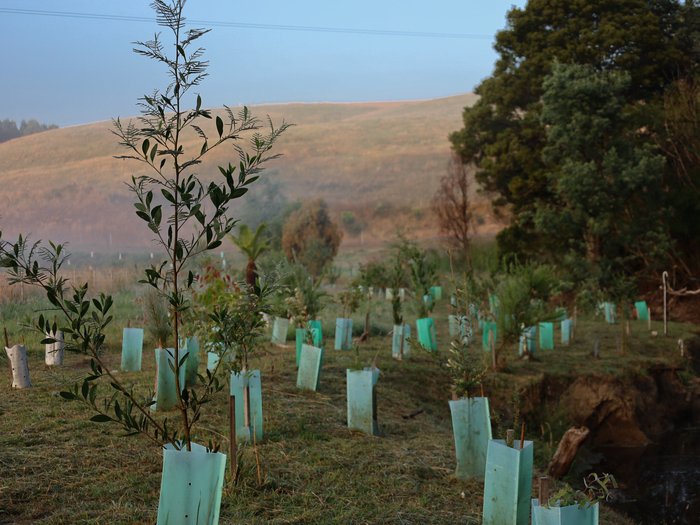
“We had worked with NRM North before at the beginning of our farm regeneration journey. We’d seen a couple of crayfish and were excited to know they were still living in the river … we jumped at the opportunity to have the knowledge, expertise, and support of an organisation behind us.”
“We had worked with NRM North before at the beginning of our farm regeneration journey. We’d seen a couple of crayfish and were excited to know they were still living in the river … we jumped at the opportunity to have the knowledge, expertise, and support of an organisation behind us.”
Rick Mahnken
Rick Mahnken
In 2023, a ‘Picnic by the River’ event to celebrate World Wildlife Day was held at one of the revegetated areas on the property, giving more than 20 community members the opportunity to see the progress of restoration works for giant freshwater crayfish habitat.
“It was great to come along, we learnt a lot and enjoyed seeing some of your farm and what you've been up to. We are still blown away by the size of the giant freshwater crayfish and even that they exist!” Attendee, Picnic by the River.
In addition to the thriving trees in revegetated areas, the Mahnken family said the project benefits are widespread. Long term relationships have been developed beyond the funding cycle with NRM North, and they are getting lots of interest from neighbours about their land management changes.
Despite identifying time as a barrier, Liz and Rick have earmarked additional areas for revegetation and are working with NRM North to improve their farm’s soil health. Agritourism sunset tours to showcase the wildlife and revegetation activities on their property will also commence in 2023. The Mahnkens are encouraging other landholders to jump on board.

“We’re so grateful … we would love to see the funding continue in our community. Sometimes it takes a long time for farmers to find out about and/or feel comfortable about taking up these opportunities. We’ve learned so much about the river, crayfish, and habitat. The planting has created a beautiful space which we can use ourselves and integrate into our emerging agritourism business.”
“We’re so grateful … we would love to see the funding continue in our community. Sometimes it takes a long time for farmers to find out about and/or feel comfortable about taking up these opportunities. We’ve learned so much about the river, crayfish, and habitat. The planting has created a beautiful space which we can use ourselves and integrate into our emerging agritourism business.”
Liz and Rick Mahnken
Liz and Rick Mahnken
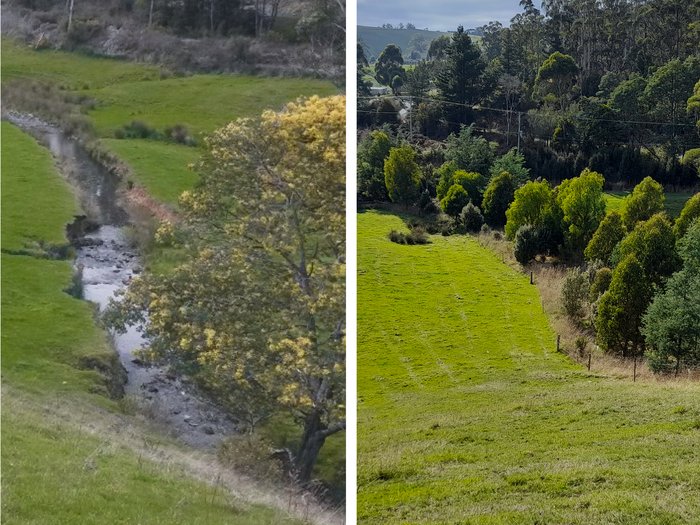
Rocky Creek, on Nigel's property, before restoration and six years after planting and revegetation.
River restoration - Case Study 2
River restoration - Case Study 2
Clare and Nigel Russell run a small cattle farm in Lilydale, in Tasmania’s north east. Since starting river restoration activities in 2016, they’ve planted more than 5000 plants, fenced three kilometres of waterways, and provided alternative water points for stock.
“We purchased the property in 2014 when stock still had access to the river which created problems such as erosion, decreased water quality and the destruction of riparian habitat,” said Mr Russell.
“Our first planting was in 2015, and we have been planting every year since, including a number of plants we grew ourselves.”
The Russells are also active members of the Lilydale Landcare group, who are working on a community giant freshwater crayfish project in Underwood.
In addition to an increase in sightings of threatened giant freshwater crayfish, there have been land management and productivity benefits too.
“From a land management point of view, although we have given up some land (for revegetation), we can now manage the land better. The fenced paddock allows for efficient grazing and more grass to be grown - therefore it’s more productive and profitable. The additional shelterbelts are great for pastures and stock, and there’s cleaner water for stock as well.”
“From a land management point of view, although we have given up some land (for revegetation), we can now manage the land better. The fenced paddock allows for efficient grazing and more grass to be grown - therefore it’s more productive and profitable. The additional shelterbelts are great for pastures and stock, and there’s cleaner water for stock as well.”
Nigel Russell
Nigel Russell

Nigel Russell, standing in front of one of the NRM North, supported revegetated areas on his Lilydale property.
The benefits of the revegetation efforts were widespread. Mr Russell said meeting new community members, getting the children involved, and learning how to collect seed and propagate native plants were a bonus.
The project wasn’t without challenges, including juggling work, family and life commitments. Having volunteers to assist with the plantings was crucial.
“Solving one problem created another, in that when the stock was excluded, native plant reseeding did increase, however some weeds did too,” said Mr Russell.
“This is something we continue to work on and which hopefully the plantings will eventually shade and out compete,” said Mr Russell.
The message for other landholders thinking of doing the same thing?
“Do it. The only way to eat an elephant is a mouthful at a time! The scale of the project can seem daunting with fencing, contractors, plants and ground preparation, but it has so many benefits.”
The message for other landholders thinking of doing the same thing?
“Do it. The only way to eat an elephant is a mouthful at a time! The scale of the project can seem daunting with fencing, contractors, plants and ground preparation, but it has so many benefits.”
Nigel Russell
Nigel Russell
Get involved
There are still plenty of ways that you can help to protect and support giant freshwater crayfish in Tasmania.
- Become involved in NRM North’s Volunteer Champions Program and attend a volunteer planting day for giant freshwater crayfish habitat
- Join your local Landcare or other environmental group such as Lilydale Landcare to assist with tree planting and weed management activities
- Report poaching activities to the Inland Fisheries Service at infish@ifs.tas.gov.au or call 1300 INFISH
- Maintain native streamside vegetation and protect riverbanks from erosion by fencing livestock out of waterways and providing off-stream water sources for livestock
- Maintain your fence and streamside vegetation buffers of at least 10 metres from the riverbank (both sides) for shading and runoff filtration
- Leave critical habitat, such as logs and branches that fall into waterways in place.
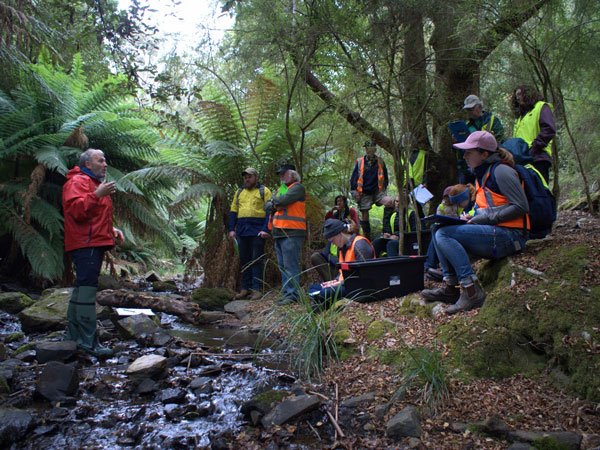
Become directly involved in giant freshwater crayfish conservation by identifying priority habitat for the species through the project’s citizen science program. Image: Lauren Bird.
Partners
This project was supported by NRM North, through funding from the Australian Government’s National Landcare Program.
Partners
This project was supported by NRM North, through funding from the Australian Government’s National Landcare Program.


